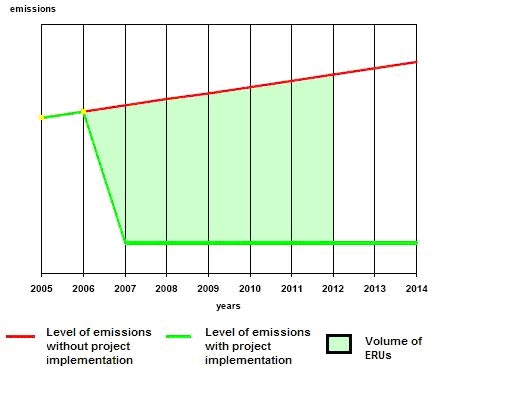
CDM Projects
CDM Projects
What is the Kyoto Protocol’s Clean Development Mechanism (CDM)?
UNFCCC: http://unfccc.int/2860.php
Kyoto Protocol: http://unfccc.int/essential_background/kyoto_protocol/items/2830.php
The Kyoto Procotol proposes three mechanisms: CDM (Clean Development Mechanism), JI (Joint Implementation) and ET (Emission Trading). CDM is between Annex-I country and non-Annex-I country while the other two are between Annex-I countries.
- The CDM defined in Article 12 provides for Annex I Parties to implement project activities that reduce emissions in non-Annex I Parties, in return for certified emission reductions (CERs).
- JI under Article 6 of the Kyoto Protocol provides for Annex I Parties to implement projects that reduce emissions, or remove carbon from the atmosphere, in other Annex I Parties, in return for emission reduction units (ERUs)
- ET as set out in Article 17 of the Kyoto Protocol provides for Annex I Parties to acquire units from other Annex I Parties and use them towards meeting their emissions targets under the Kyoto Protocol.
So the outputs of the three mechanisms are CERs (Certificated Emission Reductions) from CDM, ERUs (Emission Reduction Units) from JI and AAUs (Assigned Amount Units) from ET. They are all representing GHG reductions but playing different roles in emission trading. For example, CERs need to be transferred into ERUs or AAUs when traded between Annex-I countries.
Which Greenhouse Gases are concerned?
The object of the Kyoto Protocol is to reduce emissions of six main greenhouse gases, namely:
Gas |
Source |
Global Warming Potential (GWP) |
| Carbon dioxide (CO2) | Biomass respiration and burning land-use change, energy, transport, industry, etc. | 1 |
| Methane (CH4) | Energy, landfills, ruminants, waste treatment, rice agriculture, biomass burning, etc. | 21 |
| Nitrous oxide (N20) | Transport, industry, livestock and feed, biomass burning, etc. | 310 |
| Hydrofluorocarbons (HFCs) | Refrigeration and air-conditioning industries, firefighting agent. | 140 - 11,700 |
| Perfluorocarbons (PFCs) | Electronics industry processes | 6,500 - 9,200 |
| Sulphur hexafluoride | Dielectric gas for high voltage applications | 23,900 |
The figure in the last column shows that not all GHGs have the same impact on climate change: Global Warming Potential is the ratio of the warming caused by a substance to the warming caused by a similar mass of carbon dioxide. CFC-12, for example, has a GWP of 8,500, while water has a GWP of zero.
Therefore, implementing a project for the destruction of fluorocarbons will have a terrific positive impact on climate change, and considerably contribute to lowering emissions so as to reach targets.
Where are these fluorinated gases found?
HFCs
Designation |
Main applications |
| HFC-23 |
|
| HFC-32 |
|
| HFC-43-10mee |
|
| HFC-125 |
|
| HFC-134a |
|
| HFC-143a |
|
| HFC-152a |
|
| HFC-227ea |
|
| HFC-236fa |
|
| HFC-245fa |
|
| HFC-365mfc |
|
PFCs
PFC gases and liquids are traditionally used in several electronics industry processes ranging from semiconductor front-end manufacturing, IC-components quality control testing to direct contact dielectric cooling of e.g. power electronics assembly.
SF6
Sulphur hexafluoride (SF6) is an excellent dielectric gas for high voltage applications.
The information above is an extract from http://www.fluorocarbons.com
What are the results, and their financial impact?
The diagramme below shows the evolution of emissions without implementing a project (in red). This is increasing because it takes into consideration the hypothesis of production increase. Then in green is the evolution of emissions when a project is implemented. The light green zone shows the volume of emissions that can be traded. It stops in 2012 because the current scheme only is valid until 2012, it will very soon be discussed of how the scheme will evolve after 2012.

This shows the amount that can therefore be gained per year by trading:
Emission credits x GWP x Market price
In private enterprise, emissions trading is very attractive because it does not harm industrial concerns, or require government subsidies. When the price per ton of emissions becomes high enough, well-managed polluting enterprises can make a rational decision to invest in pollution control equipment, and sell part of their emissions licenses.
In some proposed systems, the government grants tax credits to enterprises. However, these are more expensive for governments, and far less popular for that reason.
Emissions trading is attractive to public-interest environmental organizations, because in an open market they can purchase and retire emissions licenses. This permanently reduces the total amount of pollution produced.
The information above is an extract from http://en.wikipedia.org/wiki/Emissions_trading